Recovery Stories & Articles about Addiction Recovery
Inspiring recovery stories from staff and clients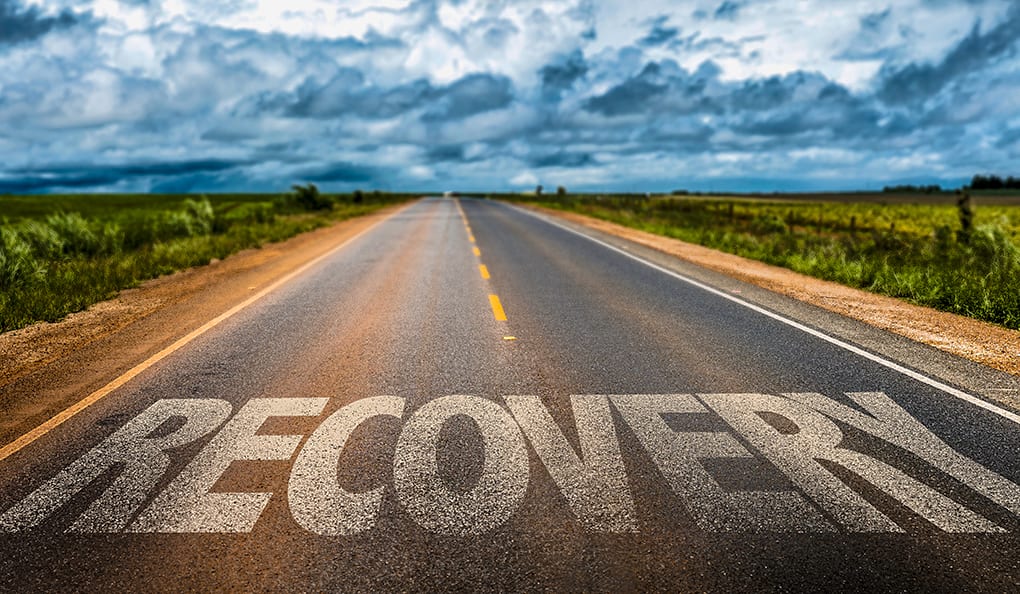
Austin-Area Addiction Treatment Options
Your Austin-Area Addiction Treatment Options
Addiction recovery is a process. Admitting to yourself that you have a substance abuse problem is the first of many important steps in that process. The next step is to find a solution to that problem. For most addicts in recovery, this means finding an effective treatment program that will help them reclaim their health and happiness.
For a person suffering from substance abuse, there are several treatment paths available. Some find that detox is the best way to get clean before going into rehab. Others begin their recovery journeys by going straight to an inpatient or outpatient facility. After formal treatment, these individuals can continue to work on recovery more independently, using the lessons learned during rehab and the support of a therapist and regular recovery meetings to stay strong and sober. Others go straight from detox into a sober home, and yet still others bypass formal treatment altogether, getting the support they need to turn their lives around by moving directly into a sober home.
The vital thing to keep in mind when it comes to addiction recovery is that there isn’t one process, path, or method of treatment that will work for everyone. And what works for each person may change over the course of the recovery journey. It’s critical to do the trial and error work that it takes to find the “right things” – and the right people to help you sort out what those “right things” are.
Below you’ll find a breakdown of some treatment options and supports available in and around Austin, Texas, where the recovery community is strong. Our hope is these resources will help you discover what works for you, what your “right things” are, and guide you to your best local help in time of need.
Treatment Programs
Inpatient Treatment Programs
Someone participating in an inpatient (residential) treatment program must live at that facility for a period of time. How long an individual might stay depends on the program and the individual’s needs. The average stay is 30 days, but many facilities offer 60- and 90-day programs as well. The overall length of a person’s stay depends on numerous factors, including the severity of his or her addiction, co-occurring mental or physical problems, and whether that person has been through rehab before.
Inpatient treatment facilities provide 24-hour care and supervision, and a structured environment where people receive substance abuse treatment alongside other individuals also in recovery. For this reason, it’s a good option for someone who is suffering from long-term addictions or heavy substance use, is addicted to multiple substances, and/or has co-occurring issues that could complicate and worsen the detoxification experience. Medical professionals are available in an inpatient setting to address the physical side of addiction recovery, from the harmful effects of drug or alcohol use to the difficulties of the withdrawal process. Therapists and psychiatrists are also present to support the mental and emotional side of recovery. Residents may participate in life skills and relapse prevention groups or classes, and in therapeutic activities designed to help them learn to cope with stress in different, healthier ways.
A growing number of inpatient facilities also provide support to recovering addicts’ families. Family programs invite the loved ones of those in recovery to participate in various activities in order to repair trust, improve communication and generally help repair dysfunctional family dynamics. Family involvement in an individual’s recovery typically leads to better outcomes.
Inpatient treatment is the most expensive addiction treatment option, with prices for a 30-day stay ranging from $2,000 to $25,000 + a day, depending on whether basic, standard, or luxury-level care and amenities are provided.
Some inpatient options in the Austin area include:
New Hope Ranch
(512) 566-3050
11908 Sparks Road, Manor, Texas 78653
admissions@newhoperanch.com
https://newhoperanch.com
Ripple Ranch Recovery Center
(855) 239-7117
2098 Texas Oaks, Spring Branch, Texas 78070
https://shadowmountainrecovery.com/location/1/ripple-ranch-recovery-center
The Treehouse
(866) 332-7439
6950 Shady Lane, Scurry, Texas 75158
info@addictioncampus.com
https://www.treehouserehab.org
The Right Step
(844) 768-0412
840 Co Road 420, Spicewood, Texas 78669
https://www.rightstep.com
You can find a more comprehensive list of inpatient addiction programs.
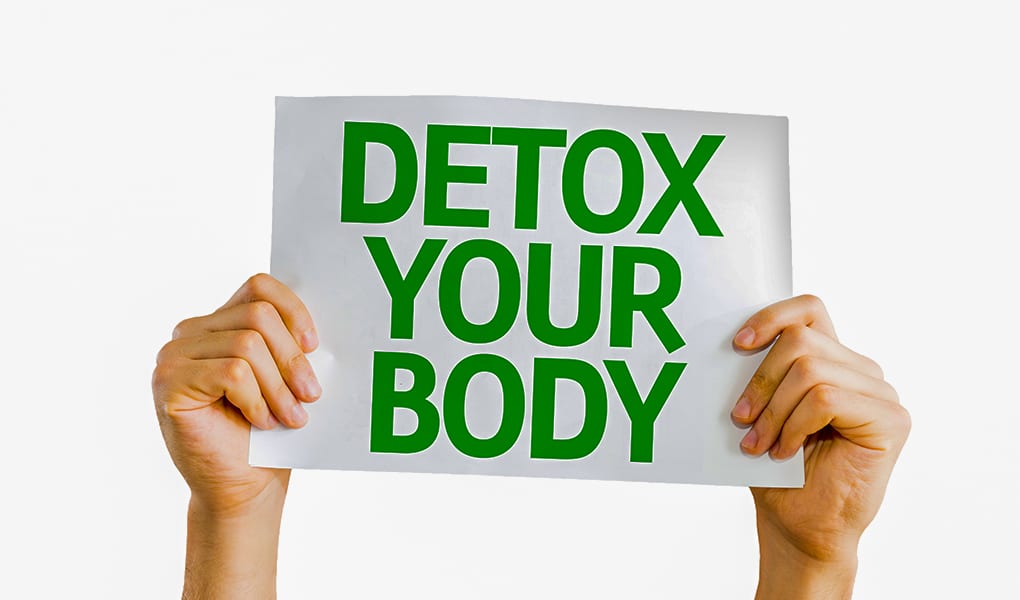
Outpatient Treatment Programs
Outpatient treatment programs require participants to come to the facility or clinic for certain hours of the day or week while maintaining residence at home during non-treatment hours. The same services that are provided in an inpatient setting are typically offered in outpatient programs as well: education; medical care; individual, group and family therapy; and psychiatric treatment. Outpatient treatment covers a range of program types with varying levels of intensity, from day programs to intensive outpatient programs (IOPs) to aftercare.
The major differences between inpatient and outpatient care have to do with the level of supervision and structure. Outpatient treatment has the advantage of enabling people to proceed with their daily lives – work, social engagement, family responsibilities, and so forth – while going through treatment. The downside of outpatient treatment is that the greater freedom allowed may lead to greater temptation to return to the places, people and things that fueled the addiction.
Outpatient drug addiction treatment is a good option for patients who have already gotten an initial grounding in their recovery at an inpatient program, or through detox, or for those who have a strong commitment to their recovery already and can rely on good support at home. The cost of outpatient care is generally less than inpatient, with price ranges varying widely based on the facility and its services, the number of visits per week, and the length of the program.
There are numerous outpatient addiction treatment options in and around Austin, including the following:
Seton Mind Institute
(512) 324-3380
Multiple Austin locations
https://www.seton.net/behavioral-health-care/seton-mind-institute/
New Hope Ranch
(512) 566-3050
11908 Sparks Road, Manor, Texas 78653
admissions@newhoperanch.com
https://newhoperanch.com
Northwest Counseling & Wellness Center
(512) 250-9355
12335 Hymeadow Drive, Suite 300, Austin, Texas 78750
https://www.ncwcaustin.com
See Sober Austin for a more comprehensive list of outpatient programs.
Detox Treatment Programs
Detoxification is the process of removing toxic substances from the body. For substance abusers, this term describes the period of time it takes for the body to clear itself of the influence of any drugs or alcohol. A detox treatment program provides individuals under the influence of drugs or alcohol with a safe place to undergo that detoxification process. Withdrawal from an addictive substance can be extremely uncomfortable, and in some cases, even dangerous, especially for those addicted to depressants or opioids. Medical personnel at a detox can oversee this detoxification process, using medications where warranted to ease the discomfort of withdrawal and ensure physical safety.
The detox process can take anywhere from a few days to several months. The length it takes depends upon a variety of factors, including the addictive substance the person was using, the length of time the person was addicted; the dosages of the substance taken; the individual’s genetic makeup, age and gender; and underlying medical and mental health issues. Most people can successfully detox within a week or so (though cravings may linger long afterwards). With that in mind, detox programs are typically 3, 5 or 7 days long, and are designed to support the individual through the initial, most difficult part of withdrawing from a substance.
Detox supports a person through withdrawal, but these treatments are not long or comprehensive enough to address the underlying emotional, psychological, social and behavioral issues that drove the addiction. For this reason, people seeking recovery from substance abuse should view detox as the first stop on a longer journey home to wholeness. An inpatient or outpatient treatment program is a good next step for those who have successfully completed a detox program.
Lonestar 24-Hour ER and Texas Star Recovery are two excellent choices for detox programs in Austin.
Lonestar 24-Hour ER
(830) 627-0911
1751 Medical Way, New Braunfels, Texas 78132
info@lonestar24hrer.com
https://www.lonestar24hrer.com
Texas Star Recovery
(512) 462-6729
1106 West Dittmar Road, Austin, Texas 78745
https://texasstarrecovery.com
For other choices, see Sober Austin’s list of facilities for Drug and Alcohol Detoxification.
Recovery Homes
When formal treatment ends, individuals in recovery can choose from various aftercare options, including a recovery home (also known as a sober living home). A recovery home serves as a bridge between rehab and fully independent living. It’s a place where residents can practice the skills they’ve learned in treatment while living in a supportive environment with others who are also in recovery.
Although a resident can freely come and go to work, social events, and other engagements while living in a recovery home, structure is still provided by strict house rules, by curfews, and by the accountability provided regarding meeting or support group attendance. House members are required to remain sober and submit to random or scheduled drug and alcohol testing to ensure compliance.
Recovery homes are ideal for gaining confidence about life back in the “real world” and for building a network of sober friends that can serve as a second family. Standards for accountability can vary from home to home, but for most the support is better than what they’d have on their own and is instrumental in staying on the right path.
Recovery homes are fairly affordable compared to formal treatment. Still, like treatment programs, costs can vary. A “residential fee” or rent is the highest associated cost, and this goes toward covering the mortgage of the house or apartment building being used for the recovery home. Residents are often responsible for their own food, gas, medications and other incidentals.
Second Chances Recovery Homes has been serving those in recovery in the Austin area for over a decade. Unlike some other recovery homes, we support the use of medication-assisted therapy for our residents and accept those with dual diagnoses. Our experienced staff are there to support men and women in recovery through the tough transition from treatment to independent sober living.
You can find a list of other Austin-area recovery homes here.
Other Recovery Supports
MAT (Medication-Assisted Treatment)
Medically or medication-assisted treatment (MAT) involves the use of medications in conjunction with counseling and various behavioral therapies to cure drug addiction. It is most effective at treating opioid abuse disorders and, in some cases, may help prevent people from relapsing. At present, the FDA has approved three drugs to treat opioid addiction: naltrexone, methadone, and buprenorphine. The popular addiction medication Suboxone is a combination of buprenorphine, a drug that relieves symptoms of opioid withdrawal, and naloxone, a drug that reverses the effects of narcotics.
The use of MAT has been shown to be highly effective in treating addiction, but there is a stigma associated with the use of some of these medications. The fear that drugs like Suboxone, for example, are merely acting as substitutes for the opioid addict’s drug of choice, have fueled much controversy over medication-assisted treatment. Certainly, MAT has its flaws, and without proper supervision, can be abused just as naysayers fear. There is a need to develop more advanced methods of addiction treatment using medication, but in the meantime, drugs like Suboxone are often better than no medication-assistance at all for the addict who is struggling to break the cycle of drug abuse.
Click here to learn more about Suboxone and the value of MAT in addiction recovery.
12 Steps Meetings
The 12 Steps were originally created by the founders of Alcoholics Anonymous as principles to help establish a basis for recovery from alcohol addiction. The program was highly successful during its early years, inspiring other addiction recovery support groups such as Narcotics Anonymous and Overeaters Anonymous to adapt the program or steps for their own uses.
Today there are 12-step programs for many types of addictions and compulsive behaviors. These programs have helped people from varied backgrounds, classes, and belief systems. Though the 12 Steps rely heavily on Judeo–Christian spirituality, the program has proven useful even for atheists and agnostics. Its insights into human nature, the power of vulnerability and connection, and the realities of addiction have enabled it to transcend barriers and help millions worldwide overcome their addictions.
Twelve Step meetings are usually organized locally. Members meet on a regular basis, often in churches or community centers, and discuss the Twelve Steps and related literature while also sharing personal stories of failure and success in their recoveries.
Getting over any type of addiction requires encouragement, support, and, most of all, accountability – and that’s where the 12 Steps shines. Addicts are supported in 12 Step meetings by people who are like them and have overcome (or are still overcoming) addiction. The sponsorship model promoted by the 12 Step Program, where new members are mentored by others further along in their recovery, has been instrumental to the success of the 12-Steps in helping addicts get and stay clean.
There are many 12-Step meetings in Austin. Click here to find the 12-Step meeting that is right for you.
Other Support Groups
The 12-Steps may be one of the most popular support group models out there, but it’s by no means the only one. Here are a few non-12 Step options:
- SMART (Self-Management and Recovery Training) Recovery is a non-12 step support group that uses a four-point program to help those struggling with addiction reclaim their lives. It focuses on 1.) Building and maintaining the motivation to change, 2.) coping with urges to use, 3.) managing thoughts, feelings and behaviors without turning to addictive substances, and 4.) living a balanced, health, and positive life. SMART touts itself as secular and science-based.
- Moderation Management takes an unusual approach in that it does not require abstinence for its group members. It targets drinkers in the early stages of their alcoholism, when the disease has not yet become intractable, and changing behaviors to encourage moderate alcohol intake are perhaps still possible. Many MM members go on to 12 Step or other abstinence-based programs, but some people find Moderation Management as less threatening first step toward recovery.
- Women for Sobriety specializes in the needs of women in recovery. Its program uses 13 acceptance statements to help women re-wire their brains and overcome self-destructive thoughts and beliefs that drive their addictions. WFS promotes the idea that if a more positive self-image will lead to better life choices.
A list of 12-Step alternatives in Austin, Texas, can be found here.
Click here for Moderation Management meetings in Austin.
Addiction Therapists
Addiction therapists are counselors who specialize in helping their patients to overcome drug and alcohol dependencies as well as other self-destructive habits such as disordered eating or gambling. These therapists assist patients in identifying the underlying problems driving their addictions and in developing healthier habits and coping mechanisms. They can provide progress reports to courts, refer patients to support groups, and set up aftercare plans. Some addiction therapists may also support patients in their pursuit of life and career goals.
Carma Health has a team of therapists available for those who utilize their healthcare services.
CARMAhealth (512) 212-4670
630 West 34th Street, Austin, Texas 78705
austin@carmahealth.com
https://carmahealth.com/
Joe Dias has served many recovering addicts, including Second Chances Recovery Homes residents.
Joe Dias Counseling Services
(512) 439-9808
mr.dcounseling@gmail.com
https://sites.google.com/site/joediascounselingservices/
For a list of other addiction therapists in the Austin area, click here.

Recovery Coaches
Recovery coaches are another powerful tool for your recovery toolbox. In the sports world, a coach comes alongside a player and advises and encourages, helping that athlete to reach his or her potential. A recovery coach operates the same way, except that his or her focus is on supporting people in their addiction recovery. Recovery coaches have often been through addiction recovery themselves and are, therefore, able to offer guidance and encouragement from their personal experiences. Like a therapist, a recovery coach often assists in developing a wellness plan and connects the recovering addict with helpful resources. Although recovery coaches may give offer advice, they are not licensed therapists, and are not qualified to provide formal counseling. They function more as personal cheerleaders through the recovery process.
There are many excellent recovery coaches in the Austin area, including the following:
Recovery coaches with Communities for Recovery
4110 Guadalupe St., Bldg. 635, Austin, Texas 78751
512-758-7686
info@cforr.org
https://cforr.org
Wayne Johnson (with Communities for Recovery)
wayne.johnson@cforr.org
(512) 954-0070
Darrin Acker (with Communities for Recovery)
(512) 818-7557
dacker@cforr.org
Recovery coaches with Action Wellness Group
https://www.actionswellness.com
(512) 955-4364
For a more complete list of recovery coaches in Austin, Texas, click here.
Conclusion
There are a lot of choices when it comes to treating addiction. Some self-knowledge and advice from therapists, family and medical professionals are instrumental in helping the addict on the brink of recovery to determine the best course for him or her.
Keep in mind that it is never a good idea to go “cold turkey” and detox your body without medical supervision. Put yourself in the best possible position to avoid relapse or a medical crisis by entering a detox program or an inpatient program (these typically include a detox phase). It’s also worth pointing out that very few people, if any, have ever successfully kicked an addiction on their own. Reach out for the support you need to make genuine, lasting changes.
Above all, do not allow the multitude of options to paralyze you. Sometimes you simply have to take a step – any step – and things become clearer from there.
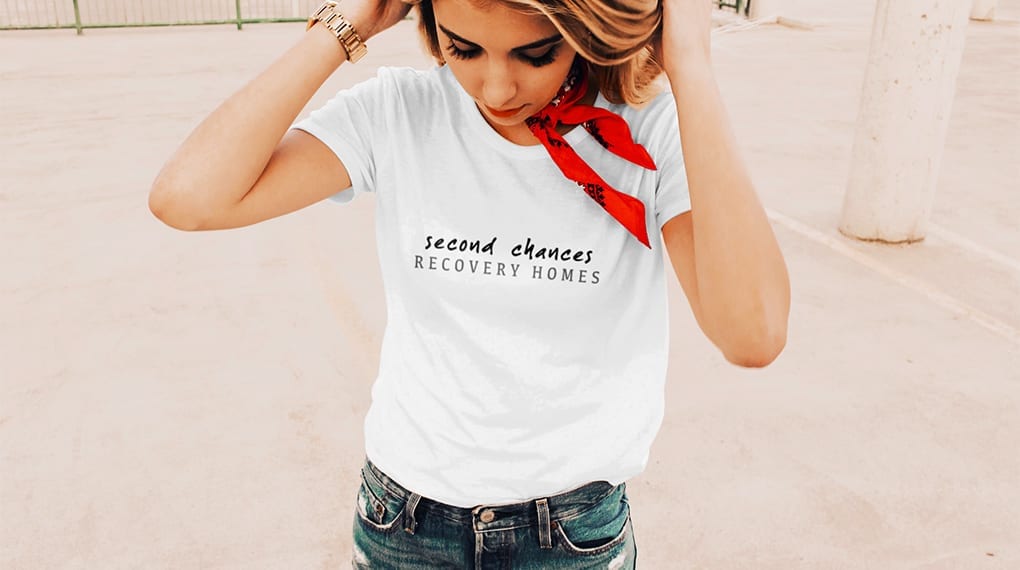
4 Tips to Recover Like a Rockstar
Recover Like a Rock Star: 4 Tips
The term “rock star” used to refer to, well, a rock star – a pop musician with long, unkempt hair who used his stardom to justify trashing hotel rooms and smashing guitars. These days, “rock star” is used more often to capture good behavior than bad. We call high-performing employees “rock stars” in the business world, and a rock star mom is one who juggles the kids, the laundry, and her 9-5 job while still managing to get her nails manicured regularly. A rock star, then, is someone who succeeds at something – who brings star power to the table where it matters most. How do you recover from addiction like a rock star? Read on to find out.
Rock Your Higher Power
There is a reason why the successful Twelve Steps of Alcoholics Anonymous begins with reference to faith that “a Power greater than ourselves could restore us to sanity.” Addiction is sickness of the soul, not just the body and mind. Numerous studies have positively linked religious belief or spirituality with long-term recovery from substance abuse. Higher resilience to stress, a more optimistic life outlook, and lower levels of anxiety that emerge from religious faith increase the chances of a recovering addict leaving his or her drug of choice behind permanently.
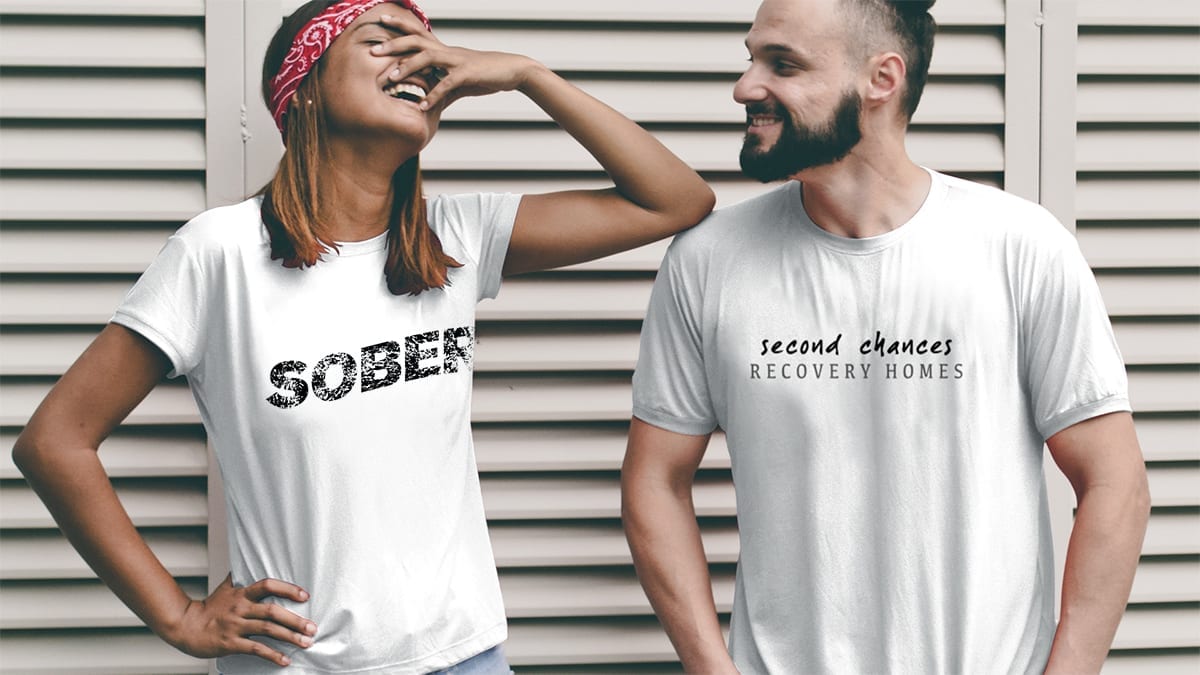
Rock Your Recovery Community
You’ve heard that it takes a village to raise a child? Well, it takes a village to recover. Nurturing connections to others who are supportive of your recovery is critical for staying on track and weathering life’s inevitable rough patches. Actively build friendships with healthy, sober people. Go to recovery meetings. Go every week. Go even when you think you’re doing well and don’t need them as much anymore. And stick with your sponsor because accountability is key.
Rock a “Long-Haul” Mindset
The habits of heart and mind that held you in your addiction weren’t developed in a day, and they won’t be reversed in one. A 30-day or even 90-day rehabilitation program is typically just the beginning of the slow, rugged trek toward regaining your life. This can be a hard pill to swallow (forgive the pun) for many of us in today’s “instant” society with its drive-thru meals and on-demand programming. One day at a time, one step at a time, one goal at a time is sage advice when the road seems too hard, long and lonely. Recovery is a lifelong commitment to staying clean and growing as a person.
Rock the Sacrifice
The life you gain when you leave your addiction behind cannot be compared to the misery of your old existence. But there’s a cost to getting clean, and it’s not just the sort that hits your wallet. Your mental and physical comfort, relationships, old stomping grounds, that indefinable something extra your substance of choice seemed to provide…all may end up on the altar as you move toward whole-person health and freedom.
Embrace the loss. To take hold of something new, sometimes you have to empty your hands. If you want to grow that gorgeous bed of flowers, you will have to kill some weeds. The good news is that the sacrifice will be worth it, in the end.
And you can hack the pain (despite what your head and heart are telling you).
You are, after all, a rock star.
Contact Second Chances Recovery Homes Today
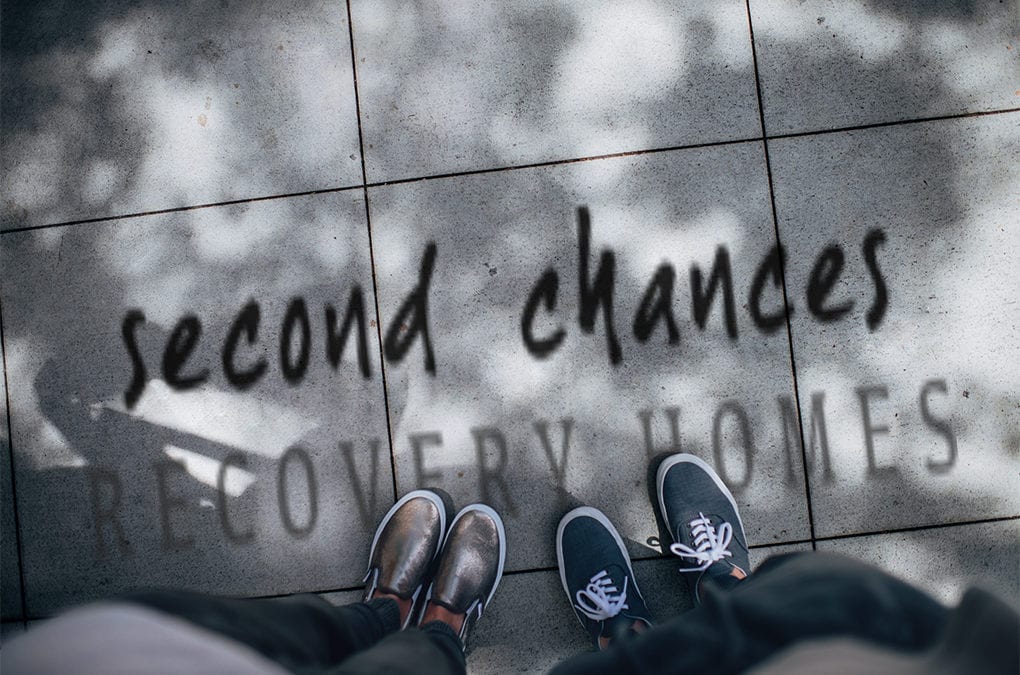
Holistic Addiction Treatment
What is holistic addiction treatment?
A holistic approach to medicine is one that takes the “whole person” into account. According to this view, all parts of a person – mind, body, and soul – are closely interconnected, with a problem in one part having implications for the others. Optimal wellness depends upon bringing these parts into balance, or harmony.
In this era of personalized medicine, “holistic” treatments for ailments of all kinds have become common. Holistic therapies in addiction treatment are a natural expansion of the concept, with more and more drug and alcohol rehabs and recovery residences embracing the complementary and alternative (CAM) wave. But if “buzz” automatically equaled legitimacy, sauna suits for weight loss would never have been a thing. Is holistic addiction treatment just hype, or is it legitimate help?
Not Your Grandfather’s Recovery Modality
Any investigation into holistic treatments in recovery should begin with a look at how they differ from – and complement – traditional treatment methods.
Traditional forms of addiction treatment typically pair therapeutic measures such as individual and group counseling with the use of medications that address mental and physical conditions. Twelve-step programs and other so-called “evidence-based” therapies like cognitive-behavioral therapy (CBT), whose effectiveness are backed by bodies of research, are staples in the traditional approach. While the detox-rehab-12-Step track with its emphasis on behavioral therapy and counseling has met with some success over the years, relapse rates remind us that “some” success is not nearly enough when people’s lives are on the line.
Critics of the traditional model allege that traditional recovery modalities are too narrow in their focus, failing, for example, to adequately address the deeply-rooted personal issues and emotions behind chronic addiction.
Traditional addiction treatment can also err in the direction of “one-size-fits-all”. Psychology Today tells the story of a heroin addict, Wyatt D., who went through rehab at least 12 times before he stumbled an alternative to the 12-Step philosophy he simply couldn’t connect with. When asked why he kept going back to the same types of rehabilitation places when they did not benefit him, Wyatt said he was told there weren’t any better options: 12-Step was the only way to go. He eventually found a program that offered a non-12 Step approach, but too late to prevent his drug-related death. For Wyatt and many others, the cookie-cutter rigidity that has to have everyone in recovery on the same path, engaged in the exact same type of therapeutic activities, is not just counterproductive – it can be downright deadly.
Holistic therapies are typically used in conjunction with more traditional treatment measures. They are not, therefore, necessarily a different and separate approach in most treatment settings, but rather a complement to options that are already scientifically supported. Their objective is to address the needs of the whole person through strengthening mind-body-soul connections. Examples of holistic therapies include the following:
- Exercise
- Nutritional intervention
- Neurofeedback
- Mindfulness techniques
- Yoga
- Acupuncture
- Massage
- Guided meditation
- Art, music, and other creative therapies
- Equine therapy
- Faith-based interventions

Does Holistic Addiction Treatment Work?
Does it work? The short answer is that it depends on whom you ask.
To date, the evidence for the effectiveness of holistic interventions in addiction treatment are at best inconclusive. Some experts point to this fact as proof that holistic treatment measures are nothing more than hype and unnecessary expense. On the other hand, proponents of holistic addiction therapies argue we shouldn’t deliver a verdict while the jury is still out. More research needs to be done. At the very least, supplementing a traditional treatment plan with these safe, low-risk holistic measures probably can’t hurt. Acupuncture, visualizations, massage and other therapies are versatile enough that they can be easily implemented in a variety of treatment settings. They also help to reduce stress, and stress is a known risk factor for relapse.
Why you should consider getting treatment for your addiction
Besides the benefits of stress reduction, there are other reasons to consider making holistic therapies a part of your recovery journey.
- The power to attract and connect. Let’s face it: the holistic approach to wellness is “in”. Given the growing comfort level nationally with seeking “natural”, “spiritual” or whole-person focused care for what ails us, the label “holistic” can at the very least be a draw for people who otherwise would resist addiction treatment. Some recent research suggests that women, teens, and young people are especially receptive to holistic measures like art therapy or acupuncture that they feel are more tailored to their unique persons and needs. If holistic measures can set patients at ease who might otherwise avoid seeking treatment for their addictions, the hope is that they can also create a greater openness to help of all kinds, traditional modalities included.
- The power to stay the course. Studies have shown that the intensity of addiction treatment (defined as a broader array of services, supplied for frequently) and patient satisfaction are positively correlated with recovery. Complementing traditional therapies with holistic activities that address overlooked areas or issues — or the same areas in different ways — ratchets up treatment intensity. And empowering those in recovery with choices about the types of treatment services they receive leads to greater satisfaction with the treatment process, which in turns extends the length of the recovery process and the likelihood of long-term sobriety.
- The faith it takes to heal. Holistic therapies often encourage explorations of person faith or spirituality, a factor numerous studies have shown to be a predictor of recovery. Not only do spirituality or spiritual practices appear to promote abstinence, commitment to a higher power has been shown to lessen the severity of relapse episodes. Recovering addicts frequently report spirituality to be an important piece of their recovery efforts.
- The wisdom to cover all your bases. People are complicated. The reality is that not even the most educated healthcare professional in the world has all the answers to the problem of why addiction occurs and how to heal from it. Holistic treatments are one more tool in the treatment toolbox, a tool that may help address ancillary issues like poor nutrition and emotional stress that fuel addictive behavior.
Treating the Whole Person at Second Chances
According to founder Jeff Lewis, Second Chances Recovery Homes “does not treat addictions. We treat people. We treat the whole person.” To do so, Jeff and his team rely upon a big toolbox with every possible help they can bring to each resident, including holistic therapies.
With its booming alternative medicine industry and creative vibe, Austin is a Texas hub for holism. Residents at SCRH are easily directed to holistic services to suit their recovery needs, from equine therapy to massage to guided meditation. Connections to local churches, faith-based 12-Step groups, and other opportunities to look inward in order to better reach outward are also readily provided.
A holistic approach to recovery is no more a magic bullet than a purely traditional, 12-Step only approach. Recovery is still a process. The journey will still have its hills and valleys; its steps forward and (hopefully occasional) steps back. The goal is mind-body-soul wholeness, with every safe and potentially effective tool on the table.
Learn more about our holistic addiction treatment today!
Contact Second Chances Recovery Homes Today

Life Together – Why Recovery Communities Work
Life Together
Why Do Recovery in Community?
The opposite of addiction is not sobriety. It is human connection. So claims British journalist Johann Hari, who has spent years delving into the causes of addictive behavior. His conclusion? Healthy interpersonal relationships are the key to both preventing and overcoming addiction. His words have challenged the long-held belief that addictions to drugs and alcohol are largely about self-control (namely, the addict’s lack of it) and the pleasurable effects of illicit substances.
Hari’s revelation is interesting on several levels. For starters, he has set in motion a long overdue shift in the way people within and beyond the recovery movement think about the problem of addiction and people who struggle with it. This is good news: shame is the enemy of resiliency. More than anything, those in recovery need to be resilient to deal with life’s ups and downs without relapse.
Hari’s research on human connection and addiction is noteworthy for another reason. It confirms what those in the recovery community already know. The rise of recovery residences in the 1960’s and ‘70’s came about because treatment providers saw that a person’s living environment and the relationships attached to it play a major role in recovery success. They noticed that people who returned to unhealthy living situations and enabling relationships after leaving detox were more likely to fall back into bad habits. But many addicts, then and now, had no alternative housing options. Sober living homes arose to fill that void, with the idea that, on many levels, the setting was the service.
So, it turns out that “connections, connections, connections” are as critical in addiction recovery as in business success.
But why?
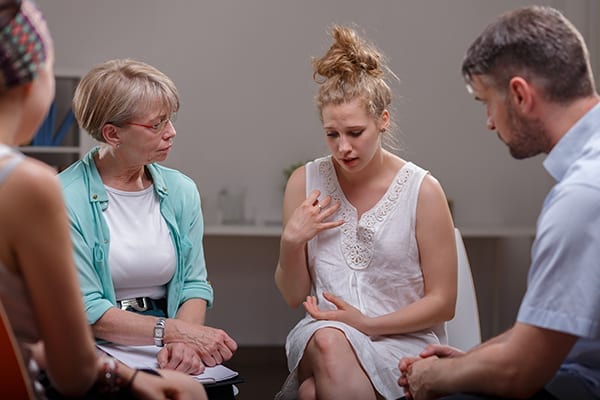
People, Places, Things
The phrase “people, places, things” is familiar to anyone who has worked through an AA or NA program. The slogan serves as a reminder to avoid the people, places, and things tied to the recovering addict’s old lifestyle of substance abuse.
Who we associate with, where we go, and the things we surround ourselves with shape our thoughts, character, and choices. The dilemma that many in recovery face, however, is that they have left their whole world behind when they walked away from drugs or alcohol.
They are alone. They are hurting. They have been suddenly stripped of the places, friends and substances around which their days were organized. All that is familiar and comfortable is off-limits, if they want to get better.
How does someone rebuild her whole world? Not easily, and not alone. Here’s where a recovery residence such as Second Chances comes in.
The Setting is the Service
The model of care for homes like SCRH is based in part on tackling the monster that “starting over” can be. The home itself and the people, things and activities attached to it are meant to develop and sustain relationships that support ongoing sobriety.
What does a sober living home provide?
- A safe, clean living space. No drugs. No alcohol. No in-your-face temptation.
- A new social network. This includes other residents, mentors and friends made through larger recovery meetings and events, as well as professional guides like recovery coaches who can support residents in pursuing life and recovery goals.
- New ways to experience fun. The relationships built in sober living naturally lead to new activities and outlets the recovering addict may not have been able to take up on his own.
With sober living homes, the proof is in the pudding. Studies have shown that people with substance abuse disorders who spend time in residential homes like Second Chances that provide this kind of social support are more likely to remain sober. They are also more likely to be employed and enjoy improved mental health.

What Second Chances Brings to the Community Table
Connections, connections, connections.
Founded by a businessman with a heart for people locked in the grips of addiction, Second Chances Recovery Homes puts a high premium on making connections that serve and heal.
In House Support
Life-giving relationships start in the homes, where residents connect naturally and positively with peers who share the same recovery goals in the course of doing daily life together. Regular community meals invite residents to slow down, listen, and share what’s on their hearts and minds.
Friendly in-house contests also help to spur residents on toward their recovery goals. A series of weekly benchmarks are set (number of meetings attended, service projects completed, etc.), and residents compete to bag the much-coveted prize of $40 cash and house bragging rights. These contests are about more than just fun: residents learn life lessons about hard work, commitment and productivity that can carry over into their healing journey and future careers.
Its revolving door of special speakers further demonstrates Second Chances commitment to its residents. It’s not unusual for successful businessmen from the community to share privately at SCRH homes about their own recovery journeys. Their goal is to inspire struggling addicts, who, by virtue of their job experiences or natural gifts, are already leaders, but because of their addictions have been leading people off of cliffs rather than up mountains. The core of the speakers’ messages is this: it’s never too late to be who you might have been.
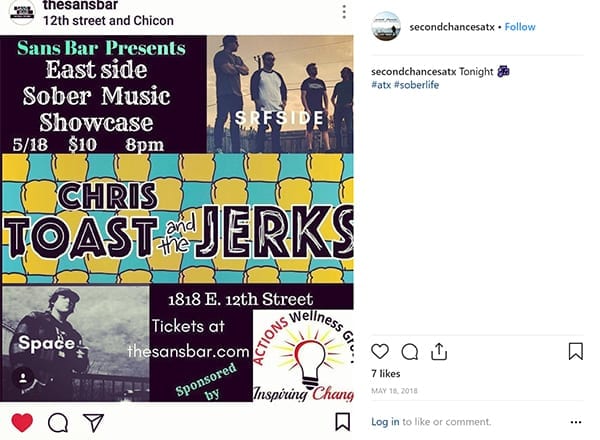
Around Town
As with any other recovery home, 12-Step meetings are a staple for support and relationship-building at SCRH. What sets Second Chances apart from other recovery residences are the quality and frequency of the other social opportunities and supports it provides.
From Recovery ATX sober parties to the popular “On Fire Bonfires” where mocktails and s’mores are served up along with a Heroin Anonymous special speaker, the opportunities to have fun, hang with friends, and further your recovery are close to endless.
Heart to Heart Coaching
Having personalized, one-on-one relational support in recovery is as important as the right kind of social network. That’s why Second Chances connects each resident with his or her own recovery coach.
Unlike a sponsor, who is usually program-specific (an AA sponsor, for example) and volunteers his time in order to help an addict work through program steps to stay sober, a recovery coach is a professional who works with clients on the big picture of their live while also personally supporting their journey to freedom from addiction. A recovery coach helps ensure each SCRH resident receives the medical, spiritual and psychiatric care he needs and is connected to the right resources for recovery. With a 12-Step sponsor and recovery coach at their sides, SCRH residents always have someone to talk to when they have the need.
Deep down, everyone hungers for to be known, loved and understood. Unmet relational needs can breed addiction, but the good news is it’s never too late to get connected and reverse that curse. The opposite of addiction, after all, is connection.
Contact Second Chances Recovery Homes Today

Why Seek Sobriety in Austin Texas?
Why is Austin a great city to get sober in?
Whether you’re an ATX native and in recovery for the first time or are considering relocating to live in a recovery residence, you may wonder what Austin has to offer someone healing from an addiction.
In a city known for its vibrant live music scene, its nightlife, and its drinking culture, is there a place for the recovering addict?
In fact, there is.
Austin’s party scene is just one facet of a city bursting with hope, life, and positive social connections. The city’s slogan – “Keep Austin Weird”— isn’t just an invitation to hidden bars bearing wacky names or to topless swimming at Barton Springs. It’s a reminder that everyone — regardless of race or ethnicity, education level or socioeconomic background, worldview or brand of personal struggle — is welcome to live, love, work, play, and (yes) even start over here.

So what exactly does Austin have to offer those in recovery?
- Community
Residents of Second Chances Recovery Homes (SCRH) have access to a large and thriving recovery community outside the walls of their homes. For starters, dozens of AA meetings are happening in Austin at various times on any given day of the week, meaning there is a meeting to match anyone’s schedule. There are also a number of Sober Meetups occurring on a regular basis.
Second Chances Recovery Homes partners with ATX Recovery, a Recovery Community Organization, or RCO, that provides education, peer-based support services, and outreach programs to recovering addicts in Austin. ATX Recovery’s physical location, The Station, hosts 12-Step and other recovery meetings and events, along with a pop-up non-alcoholic bar called Sans Bar.
SCRH also maintains relationships with other groups and businesses like Austin-based Clean Cause. Founded by Wes Hurt, a recovering drug addict and alcoholic, Clean Cause is a beverage company with a mission that extends far beyond the energy drinks it markets. Fifty-percent of the company’s profits go toward Sober Living Scholarships. These scholarships provide support for recovering addicts during the critical 30-day reintegration period following rehab, when a person is most vulnerable to relapse. Clean Cause also makes a point to hire employees who are on the recovery journey. To date, Clean Cause has donated $250,000 and provided 500 scholarships toward keeping members of the sober living community in Austin and beyond clean.
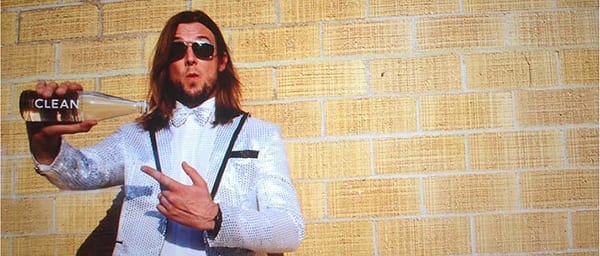
- Opportunity
Clean Cause isn’t the only company hiring in Austin, Texas. The Wall Street Journal awarded Austin the glowing title of “Hottest Job Market in the U.S.” in March of 2019. This accolade followed the city’s two straight years at the top of U.S. News and World Report’s 125 Best Places to Live in the USA list, a ranking thanks in large part to its job opportunities and affordable cost of living.
Finding a job after rehab is a top priority for many transitioning into or out of a sober living home like Second Chances. Fortunately, with the support of SCRH staff in setting vocational goals and following through on them, job hunting in Austin does not need to be a scary or discouraging prospect. The ongoing, unprecedented growth of tech, education, healthcare, construction and many other industries is good news for the job seeker looking to put the past behind him and start fresh in a new career.

- Recreation and the Great Outdoors
Sure, Austin summers are HOT, but an average of 228 days of sunshine a year make fall, winter and summer in Austin perfect for spending time outdoors in exercise and recreation.
Frequently ranked as among the fittest cities in the U.S., Austin is a mecca for cyclists, runners, cross-fit enthusiasts, and more. Scenic parks, hiking and biking trails, waterways and lakes abound, drawing residents outdoors to sweat, rest and refresh.
Austin’s invitation to the outdoors is no mere luxury for the recovering addict. Exercise can provide a significant boost to treatment for alcohol, drug and nicotine addictions. Studies show that regular exercise increases abstinence rates for addicts and eases depression, anxiety and withdrawal symptoms. Even something as gentle as yoga can be beneficial – as participants in Austin area Yoga for Recovery sessions will tell you.

- New Hobbies and Healthy Diversions
But perhaps you’re the kind of person more likely to get stressed than release stress on an outing to Mt. Bonnell or McKinney Falls State Park. Fear not: it’s still possible to add a turbo shot to your recovery efforts without getting soaked in sweat (though you shouldn’t give up on that daily walk). A variety of leisure activities and hobbies can be just as beneficial for the healing of body, soul and mind.
Contact Second Chances Recovery Homes Today
Walking away from a drug or alcohol addiction leaves a gaping hole in a person’s time and social life. A critical part of recovery is figuring out how to fill that void with fun, sober activities and people in order to prevent relapse.
Residents of Second Chances Sober Homes are encouraged to restructure their lives with work and healthy hobbies that will keep them busy and keep their recovery on track. Fortunately, Austin has a lot to offer on that front, from pottery workshops to cooking, painting, and woodworking classes and more. History buffs will find plenty of museums and historic sites; book lovers, plenty of book clubs. The bottom line is that Austin has something to offer everyone seeking to break away from old habits and fill their lives with the new.
In sum it is possible to stay social, enjoy life, and maintain your sobriety. And Austin is the perfect city in which to pursue recovery for those who have eyes to see its opportunities and hearts ready to embrace them.
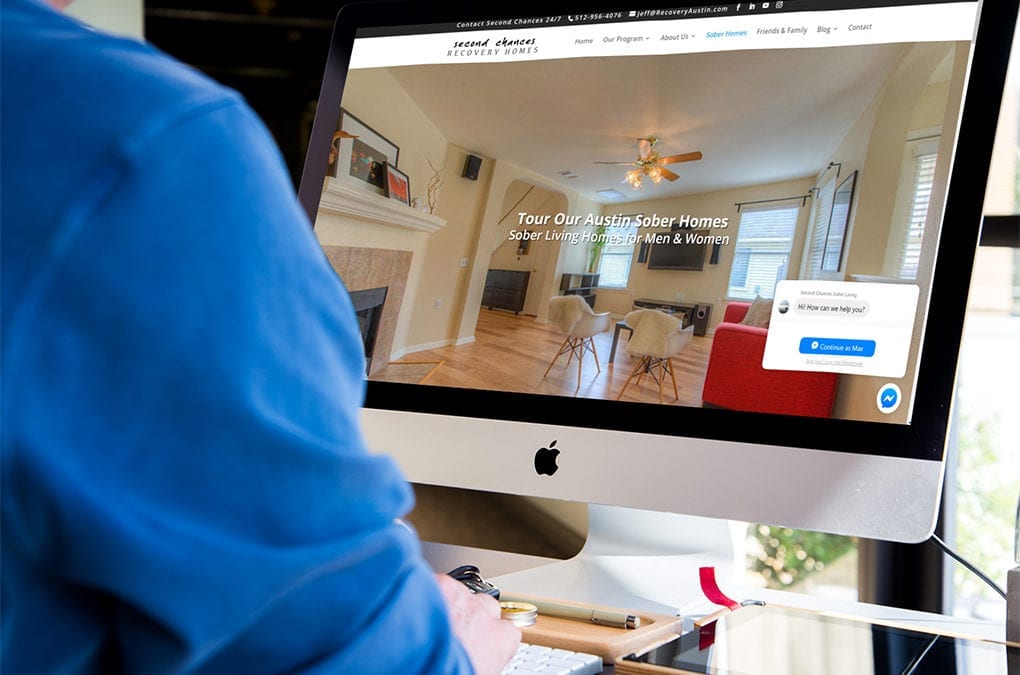
What exactly is a Sober Living Home?
Sober Living in Austin Texas
Most of us are very familiar with the term “rehab” (short for drug rehabilitation center), thanks largely to entertainment news reports that so often feature the addiction struggles of celebrities. But there are so many terms associated with addiction recovery housing, many of which overlap and confuse those seeking help. What exactly is a sober living home? How is it different from a rehab center or halfway house? What sets Second Chances Recovery Homes (SCRH) apart from its competition? The purpose of this article is to help you navigate the answers to those questions.
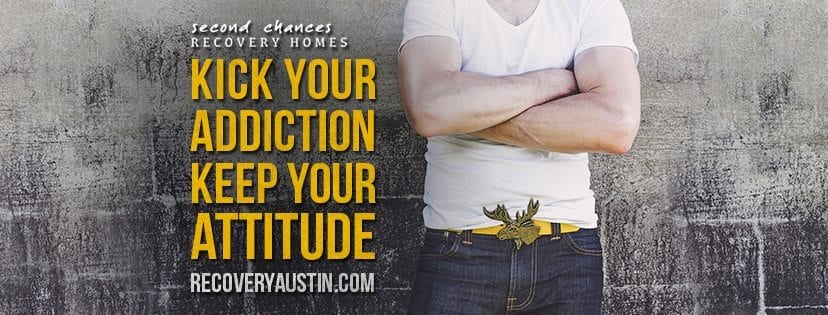
Options on the Road to Wholeness
Rehabilitation centers
Rehabilitation centers are generally the drug or alcohol addict’s first stop on the road to recovery. They specialize in treating people new to recovery and therefore offer more acute interventions than other recovery settings, such as supervised detoxification from the abused substance and 24-hour medical and psychiatric care. Both inpatient and outpatient services may be offered, with an initial 30- to 90-day stay recommended for those with longstanding or severe addictions, or addictions to more than one substance. An inpatient stay is often followed by outpatient care that allows the addict to return to living at home while continuing part- or full-time treatment.
Rehabilitation centers are designed to be restrictive, immersive environments where an addict’s entire focus is on ridding his or her body of harmful drugs and initiating the recovery process. Individual and group therapy, as well as medical and psychological care, all play a part in helping the addict to separate from a drug and/or alcohol dependent mindset and lifestyle. For most, rehab is a launching pad for recovery – the first of many steps.
Halfway Houses
Halfway houses, along with sober living homes, fall under the umbrella term “recovery residence.” A recovery residence is exactly what it sounds like: a living environment, that supports recovery from alcohol and drug addictions. While it’s possible for an addict to enter some recovery residences without having completed a stint in rehab, facilities like halfway houses and sober living homes are often seen as a bridge between the acute care rehab provides and a full return to normal life.
Halfway houses provide a drug and alcohol-free, structured living space where addicts can continue to receive some level of treatment while easing back into work and independent living. These homes promote sobriety through required or strongly encouraged involvement in 12-step groups like Alcoholics Anonymous (AA) or Narcotics Anonymous (NA), peer support from other residents, and the accountability of nightly curfews and living space inspections. House rules such as maintaining abstinence, contributing to the upkeep of the home through assigned chores, and regular payment of rent help recovering addicts to practice personal responsibility and stay focused on their recovery and life goals.
Halfway houses are similar to sober living homes (in fact, the terms are sometimes used interchangeably), but with some disadvantages. Because they are often government-funded, halfway houses are more likely to limit how long residents can stay, which means people can be forced to move out before they are ready. Halfway houses are also more vulnerable to budget cuts that can leave residents without anywhere to go but back to unsafe environments likely to trigger another relapse.
The admissions requirements at a halfway house may be stricter, as well. Some halfway houses want residents to have first completed a rehab program or be actively in treatment. Such requirements may exclude from care those who have had negative rehab experiences in the past or who are interested in pursuing alternative care options. Finally, because the term “halfway house” is also used to refer to transitional housing for ex-felons recently released from prison or to homes for people with mental disabilities, unnecessary stigma and embarrassment may be attached to living in such a facility.
Get in a Sober Living Home Today. Call 512-265-5311
Need more information about our medically assisted treatment friendly program?
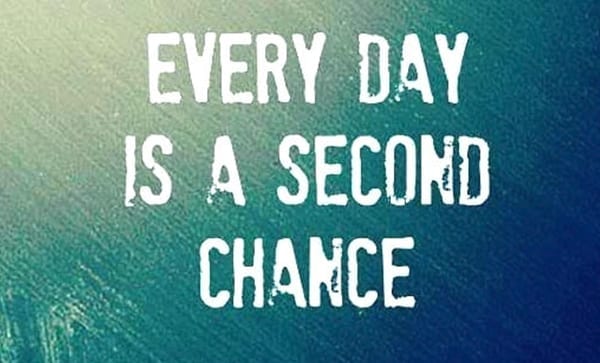
What are Sober Living Homes?
In recent years sober living homes (SLH’s) have become a more popular option for those in recovery seeking extended transitional support. These homes are usually privately owned and therefore free of the funding limitations and other restrictions that can handicap a halfway house. At minimum, they provide the same living space and structure and support as halfway houses. Many actually go above and beyond in catering to their clients’ preferences and individual needs.
Greater flexibility in tailoring treatment plans is one perk of sober living homes. Some are able to accommodate medications prohibited at other treatment facilities; some allow substitutes for required 12-step groups; and some can offer varying levels of support (counseling and mentoring services) according to the individual resident’s needs. An SLH’s flexibility often extends into length of stay for recovering addicts, with many placing no limitations on residency as long as house rules are abided by. An open-ended invitation to live in a clean, supportive environment can relieve undue stress on “what next?” and make this type of residence feel much more like a home.
Finally, while the framework of the AA-style accountability group, house expectations, and accessible support services is the same as a halfway house, the “extras” are what make SLHs more like a mansion for healing than the mere house—or, sometimes shack—offered up by its counterpart. Scheduled volunteer and leisure outings, exercise classes, upscale accommodations with modern amenities, locations in attractive residential settings, and other perks make sober living homes the recovery residence of choice for those trying to get back on their feet and learn to live again.


Sober Living at Second Chances Recovery Homes
As the sober living home has become a more popular recovery option, the number of these residences has exploded. But what does a first-class sober living home look like?
Anyone seeking a sober living home in Austin, Texas would do well to look to Second Chances Sober Living as the standard-bearer in quality care. Every facet of life at Second Chances is designed to promote physical, mental, spiritual, and social well-being.
-
Individual-tailored, holistic (whole-person) treatment
At Second Chances, residents enjoy a balance of freedom and structure tailored to their specific stage in the recovery process and their individual needs. There is no one-size-fits-all mindset here. What works is what matters. Tools, groups, and professionals that support mind, body, and spirit healing are all brought to bear in the quest for sober wholeness.
-
Full continuum of care
Second Chances is by your side through from Day One of the recovery process. Staff members are available to pick up individuals and transport them to a 24-hour detox, and from there, to an inpatient facility, if needed. Partial hospitalization programs (PHPs) and drop-down services such as intensive outpatient treatment are all supported by the Second Chances recovery experience.
-
Medication-Assisted Treatment
Medication-assisted treatment (MAT) in conjunction with other therapies is a proven tool in the fight to win the war against addiction to opioids, alcohol, and even smoking. Second Chances is one of the few sober living homes with the infrastructure to support this option for its residences. The highly-qualified staff may prescribe and safely monitor medications such as Soboxone, which supports opioid-addiction recovery.
-
Quality Medical Care
Second Chances offers professionally delivered clinical services, from its own pharmacy to a network of preferred doctors. A certified “addictionologist”, psychiatrist, and therapist are all available, sparing the resident the hassle and headache of “shopping around” for the right medical support team.
-
Solid Support
Community – the right kind of community – is key to the healing process at Second Chances. SCRH staff and assigned mentors provide guidance and accountability through the steps of recovery–from overcoming withdrawals to getting a good job. Residents are urged to support and encourage each other as well, thereby creating an atmosphere of care, concern, and goodwill in the home.
Connections to the greater recovery community in Austin are also fostered through AA meetings, events with Austin’s ATX Recovery, and relationships with other groups and businesses like Austin-based Clean Cause.
-
Upscale Accommodations
The comforts of home can be a difference-maker in the often uncomfortable process of getting clean. Second Chances Recovery Homes provides clean, beautiful, private environments with all the modern conveniences necessary to help residents focus on recovery.
Homes for men and women come equipped with on-site washers and dryers, large common areas, fully equipped kitchens, and free Wi-Fi. These homes are located close to many Austin attractions, including coffee houses, shopping centers, popular live music venues, parks, and amazing restaurants. At Second Chances, it’s possible to still enjoy life while on the road to recovery.
-
Open Doors
Unlike many sober living homes, Second Chances takes a recovering addict as early as just one day sober in its Foundation and women’s homes. The length of stay is open-ended, with SCRH’s graduate home as a luxurious final step-down option for those wanting to extend their residential recovery experience. Real-life readiness is important to long-term sobriety, and Second Chances works with each resident to ensure the necessary support is available as long as it’s needed.
Discover the life-changing difference that a quality sober living home can make in your recovery. Take that first step toward “wholeness with help” by contacting Second Chances today.
Contact Second Chances Recovery Homes Today

Medically-Assisted Treatment & Suboxone Sober Living
Medically-Assisted Treatment for Sober Living?
“I can’t help a dead person,” says Second Chances Recovery Homes (SCRH) founder Jeff Lewis, when asked about why his sober living home accepts individuals taking medications not permitted in other recovery homes. “Ultimately, if I have to choose between treating someone with Suboxone or seeing that person continue to use heroin, I choose Suboxone.”
Suboxone is the brand name for a drug gaining attention in the recovery community for its effectiveness in treating opioid addictions. Its main ingredient, buprenorphine, is one of three medications approved by the FDA as part of a medication-assisted treatment approach for substance abuse known as MAT.
What, exactly, is MAT? What part does it have to play in the journey to wholeness for a recovering addict? And what place does it have in sober living homes like Second Chances that are devoted to whole-person, no holds barred treatment?
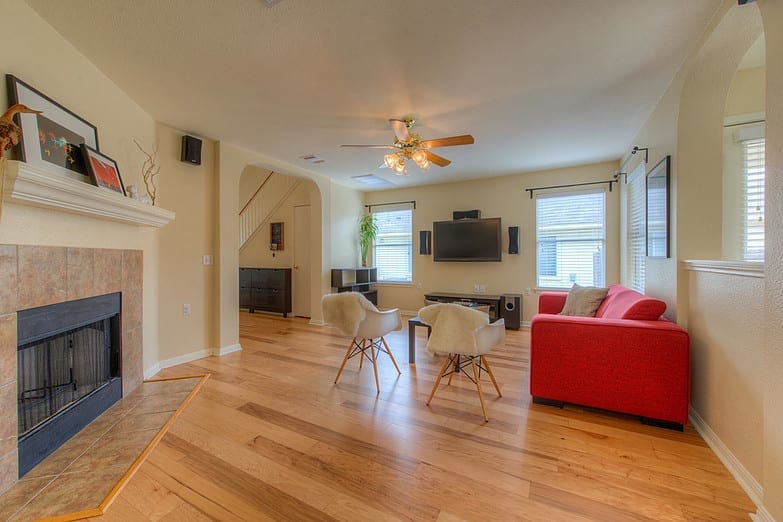
The What and Why of Medically Assisted Treatment
Medication-assisted treatment (MAT) is defined by the Substance Abuse and Mental Health Services Administration as the use of medications in tandem with counseling and behavioral therapies to sustain long-term recovery for individuals struggling with substance abuse disorders. MAT is considered one component in a holistic or “whole-person” approach to addiction healing. Though used primarily to treat opioid addictions to substances such as heroin and some prescription painkillers, MAT may also be used to address alcohol dependence.
There are currently three drugs cleared by the Federal Drug Administration for use in a MAT opioid treatment plan: buprenorphine, methadone and naltrexone. The two most popular, buprenorphine and methadone, are known as “opioid agonists”. They work by attaching themselves to the same brain receptors that were activated by the drug an addict misused, essentially tricking the brain into thinking it’s still getting that illicit drug. While in the same class of drugs as those abused, these prescription low-dose opioids are safer and more controlled than their counterparts. Their use allows an individual to begin and continue on in the recovery process by easing excruciating withdrawal symptoms and psychological cravings that make it so hard to stay clean long-term.
Numerous studies support the effectiveness of these treatments in reducing the risk of relapse or overdose for addicts. According to the Surgeon General’s 2016 report, Facing Addiction in America, MAT therapy featuring opioid agonists has been repeatedly shown to reduce illicit drug use and deaths from overdose and improve the likelihood that individuals will remain in treatment. Less potential for relapse translates into lower rates of HIV and hepatitis C infections as well. Treatment with opioid agonists in conjunction with behavioral therapies and psychosocial support “leads to better treatment outcomes compared to behavioral treatments alone,” states the report. Success rates with long-term medication-assisted opioid treatment have as high as 60% in some studies. Given the national crisis that opioid misuse has become, with over 130 people dead from overdoses every day and more than 75% of individuals with an opioid use disorder unable to remain sober for even a year, MAT is a therapeutic tool the addiction treatment industry and those it serves cannot afford to ignore.

Suboxone and Sustained Sober Living
For individuals transitioning out from an inpatient facility back into the “real world” or those simply seeking a supportive alternative to formal treatment, sober living homes can provide a structure, support and accountability that mean the difference between relapse and sustained sobriety. Stable, drug-free housing and a supportive community is what makes sober living homes a life-saving bridge for those who might otherwise be too powerfully tempted to fall back in with old acquaintances, to fall victim to old stresses, and, ultimately, to fall prey again to full-blown addiction.
For all they have to offer, however, most sober living homes will not or cannot provide medication-assisted treatment to their residents. They are not alone. The latest research indicates that MAT for opioid addiction is vastly underused in all treatment contexts, leaving millions of Americans more helpless than they need to be in the face of this devastating disorder.
Does Suboxone help with opioid recovery?
One 2018 study published in the Annals for Internal Medicine found that of 18,000 adults treated in Massachusetts emergency rooms for non-fatal opioid overdoses between 2012 and 2014, only about 30% received FDA-approved medication-assisted treatment. Those who were treated with methadone or buprenorphine were found one year later to have reduced their risk of death by 40% and 60%, respectively. Tragically, 5% of those not treated with these deaths had passed away within 12 months of that ER visit, at least 2% from confirmed drug overdoses. Further, data from the U.S. Substance Abuse and Mental Health Services Administration revealed that, as of 2016, only 41% of the over 12,000 treatment facilities in the U.S. offered one form MAT. Just 3% offered all three.
If access to FDA-approved medications greatly improves a person’s chances of successfully recovering from a substance-abuse disorder, why isn’t this access more readily available in treatment facilities, including sober living homes?
The reasons are many: restrictive drug and healthcare policies, inadequate training for healthcare professionals in addiction treatment, lack of access to these drugs in certain parts of the country, stigmas related to substance abuse treatments, and more. Perhaps most relevant where sober living homes is concerned is that many homes require full sobriety, an idea prohibits use of low-dose opioids as part of an individual’s treatment plan.
What are the benefits of Suboxone?
Such abstinence-only rules often stem from the misunderstanding that MAT is basically substituting one drug for another. While opioid agonists do perpetuate a degree of physical dependence, they have been shown to have no harmful effects on an individual’s intelligence, mental or physical functioning, or employability, unlike the drugs they help addicts detox from.
The assistance these medications provide in breaking the psychological dependency that drives the addiction cycle and restoring the addict to a functioning member of society makes them a worthy means to an end.
On top of MAT’s stigma among recovery homes, many of these homes are also not equipped to acquire and dispense such carefully-regulated medications, or to monitor their effects. As a result, less than half of recovery homes nationally allow maintenance prescriptions for methadone, buprenorphine, or naltrexone and so block those in their care from a treatment option that could mean the difference between recovery and relapse, life and death.
Medically Assisted Treatment in Austin Texas
At Second Chances Recovery Homes, treating the whole person is paramount. Treatment plans are comprehensive and individualized. They are built upon what works and saves lives. Period. This means that any safe and proven treatment options are potentially on the table, from a Twelve Step program to professional counseling and mentorship to – you guessed it — medication-assisted therapy.
Unlike many other sober living homes, SCRH is able to provide MAT to its residents because it is equipped to handle the medical side of long-term recovery. Second Chances works with a team of experienced medical professionals who can prescribe and help monitor advantageous medications like Suboxone, thus ensuring that every measure that can be taken to ensure successful recovery from an opioid or alcohol addiction is implemented. These same medical professionals may prescribe and monitor a number of medications to treat mental and physical symptoms of various kinds, including those used to treat alcoholism and depression.
How often do you use Suboxone?
All medications with the potential for abuse are stored securely, regularly accounted for, and carefully distributed. Multiple weekly drug tests help SCRH staff to ensure that medications are being used appropriately.
The goal for all residents of SCRH is improvement of quality of life while in the recovery process, so that they can not only continue living, but do so more fully. Medication-assisted treatments can play a critical role in building a bridge from the world of drug abuse to real, restored life.
How does suboxone help recovering heroin addicts?
“For the heroin or prescription pill addict, medications like Suboxone can help buy us time,” says SCRH founder Jeff Lewis. “People struggling with addiction need to stay sober long enough to get a taste for what clean living could look like for them. MAT can make it or break it for the addict who may not be able to stop using – or isn’t sure he wants to. When it comes down to it, sometimes we have to help people choose life. That’s what Second Chances is all about.”
Contact Second Chances Recovery Homes Today

New Job New Friends New Future
One of our women in the women’s home started a new job this week. When she revealed that she was in recovery at work, her coworker opened up and said that she had gone through the recovery process as well. She’s pretty much a rock star…
It’s not always easy, but she’s making & keeping her commitments and we think she’s headed for a stellar future because of her determination, our process, and the supportive community she has at our women’s sober home.
People all around you have overcome all kinds of addiction. Sometimes you never know unless you ask.
This story could be yours or your loved one’s…
Get out of repetitive cycles and get a new life with an upscale home, friends, a new job and a supportive team to help you stay on track. Call us at 512.956.4076
Second Chances Sober Living Recovery Homes are Austin’s premier destination for clean living.
Equipped with trained staff, proven programs and partner doctors, Second Chances creates an environment where residents can learn and master recovery.
Sober and clean living doesn’t have to be boring or ugly. As our homes are fully furnished upscale living environments close to the heart of downtown, our men & women’s sober homes provide the best of Austin and in community living while completing our programs.

